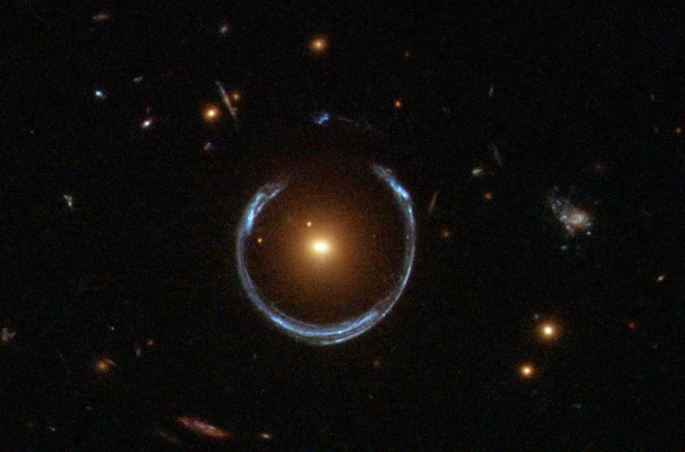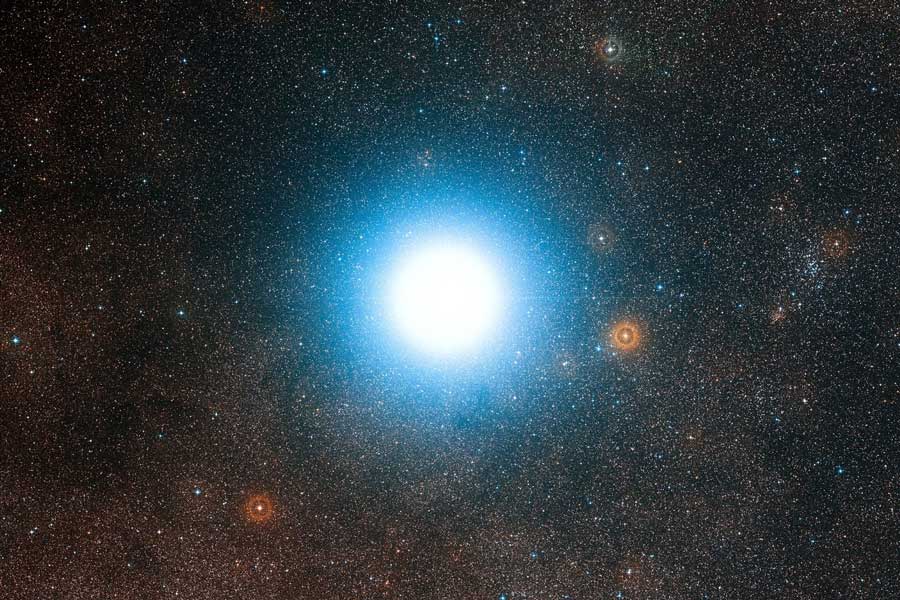Space is big, and when I say big it’s really really big. The size of the observable universe is 93 billion light years. To put that in perspective consider this: light travels at a speed of 299,792,458 m/s. So light can circle the equator of the Earth 7 times in one second!!
A light year is the distance covered by light in a year. That’s a huge distance. And if a ray of light was to travel from one end of the observable Universe to the other, it would take 93 billion years for the journey!!! And that is just the observable part. We do not know how big our Universe really is.
Taking that in mind the farthest stars a naked eye can see on a clear night are roughly 20,000 light years away.
Extending that to stars viewed with the largest telescopes, the record of the individual farthest star pushes to 55 million light years. A pretty mind-blowing record when you consider how big a light year is. But even this pales in comparison to the new record holder which lies a whopping 14 billion light years away. That’s right; a billion with a capital B. Meet MACS J1149 Lensed Star 1, also known as Icarus.
One might argue however that we have seen whole galaxies that far and as galaxies are made of stars, doesn’t that mean that the ‘farthest star’ record holder was always around 14 billion light years or even 93 billion light years considering that’s how big the observable universe is? Yes and no, because when astronomers say farthest star, they usually mean the farthest star from home that can be clearly distinguished.
Sure all galaxies contain stars but the ability to distinguish an individual one is what matters for this title. But how does one distinguish a star that far away. The answer: lenses.
To understand let us detour into something called gravitational lensing. We know that gravity acts on everything that has mass but Einstein’s Theory of General Relativity showed that light also is effected by gravity. We won’t go into the details of it for now but it will suffice us to know that when light passes close to a massive object it bends around due to the high gravitational force. The effect is not noticeable on Earth because the gravity of Earth isn’t strong enough to make the effect prominent. Here are some examples to simplify what I mean.

The ring around the orange galaxy is actually the light from a more distant galaxy being bent due to the gravity of the orange galaxy. This phenomenon is also called an Einstein Ring.
This bending of light rays by massive objects produces a lensing effect which produces some really strange effects like magnifying the image of the object, distorting its shape and so on. It is important to note that these effects are not happening physically to the object but are just an optical illusion.
With that, back to Icarus. How did we manage to make out something so far away? Gravitational lensing. You see, between Icarus and Earth lies a huge cluster of galaxies with an extremely high force of gravity. While observing a supernova in that region, scientists found another source of light that varied in brightness over time. Further research into the spectrum of light revealed it was not a supernova but a star.
However that still isn’t satisfying because we are observing something 14 billion light years away. A cluster of galaxies is not enough to magnify the light of an object that far!! So how did we see Icarus? We must consider ourselves lucky that we got to see it in the first place. Other stars inside the galaxies in the cluster also helped to bend the light of Icarus. Essentially it was like a lens in a lens. This effect is called microlensing and happens only when objects line up perfectly.

Light from the star was bent and magnified in intensity while passing through the cluster. This brightened the image of the star enabling us to see it. Icarus is a blue supergiant star which is way hotter than our Sun.
What does this study teach us? As for now we know very little about the star itself but the lensing effect allowed scientists to measure the distribution of mass in the galaxy cluster and also map the presence of the illusive dark matter, a hypothetical form of invisible matter that constitutes up to 27% of the Universe. The matter that we observe only makes up 3%.
So there you have it, a record breaker!! The Universe as always continues to blow our minds by showing us what really lies out there and just how insignificant we humans really are.


Wow 😊 very readable for a layman. Overawed by the enormity of the Universe !
LikeLike
Locating and identifying such signals must be such a difficult work!
LikeLike
Fun article—that whole gravitational lensing effect blew my mind, I hadn’t heard about that. This seems like a really interesting blog. I’m following now.
Feel free to drop by my blog if you have the time—not that the stuff I write about so far will be news to you, as I’m just now talking to my readers about stars (and am about to delve into binaries), but I do write astronomy stuff like you. Later on, I plan to get to other fields of science too, including the life sciences. (ScienceAtYourDoorstep.com)
LikeLike
Glad you liked my blog. Do check out my other posts on space related articles. Hope you like it 🙂
And I would love to check out your blog. Will definitely do it when I get the time.
By the way if you are interested you can read my book called Cosmic Holes on Amazon at https://www.amazon.com/Cosmic-Holes-Aryamann-Rajiv-Rao/dp/1521565317
LikeLiked by 1 person